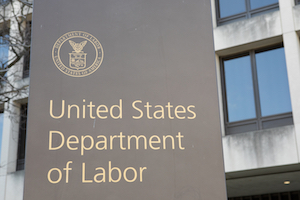Amid ongoing questions surrounding the use of private equity investments in professionally managed funds within 401(k)s, a senior Department of Labor (DOL) official confirmed that the department is conducting stakeholder outreach to assess the issue.
 Speaking May 10 at the first day of EBRI’s Spring Policy Forum, DOL Acting Assistant Secretary Ali Khawar, in response to a question about whether the department expects to revisit its earlier guidance, said that he did not want to commit one way or the other as to the department’s plans, but noted they are looking at the issue.
Speaking May 10 at the first day of EBRI’s Spring Policy Forum, DOL Acting Assistant Secretary Ali Khawar, in response to a question about whether the department expects to revisit its earlier guidance, said that he did not want to commit one way or the other as to the department’s plans, but noted they are looking at the issue.
“What I can say at this point is that ... we are doing a fair amount of outreach on the issue. We’ve probably had four or five meetings so far, and there are more planned. The issue that I think about—and that we are exploring primarily in those conversations—is around whether the guidance has been interpreted too broadly,” Khawar explained. He added that, in some ways, the issue “echoes what happened in the ESG space, where sometimes the atmospherics around what the department is doing can really take hold and control the narrative more than actually what the department has done in a formal rule.”
By way of background, the DOL’s Employee Benefits Security Administration in June 2020 under the Trump administration issued an Information Letter affirming that private equity investments as a component of a professionally managed multi-asset class vehicle structured as a target date, target risk or balanced fund can be offered as an investment option for participants in DC plans under ERISA. Even though the letter addressed a specific inquiry by a private company, it created broader speculation about whether the DOL would address this issue in formal guidance.
“That really is the question we’re trying to explore, because I think there’s a different use case for private equity with respect to large, very sophisticated plan sponsors that have investment professionals that are making these decisions and thinking about private equity as part of a broader portfolio and using it to hedge against certain market risks,” the Acting Assistant Secretary explained.
Khawar further noted that one of the things the DOL is trying to better understand is whether that is just as true when looking at the smaller end of the market. He believes what may happen is that platform providers—in designing products—could start to incorporate some kind of private equity sleeve into target date funds, so that it’s not just custom TDFs that you might find in large employer plans, but also on the smaller end of the market.
What it comes down to, Khawar explained, is “to what extent the smaller plan universe is a segment of the universe that really understands the benefits and risks of adding private equity to their lineup and whether there are different protections or the same protections that are needed.”
Khawar also reiterated that, even though it let Prohibited Transaction Exemption (PTE) 2020-02 take effect, that the DOL is looking at revisiting fiduciary rulemaking, including the five-part test, to better decide if changes are warranted. He also noted that the DOL intends to revisit the final rules on financial factors and proxy voting through a formal notice and comment period.
These comments were similar to those he made April 29 before a meeting by the American Savings Education Council, which is an EBRI-coordinated program.
- Log in to post comments
